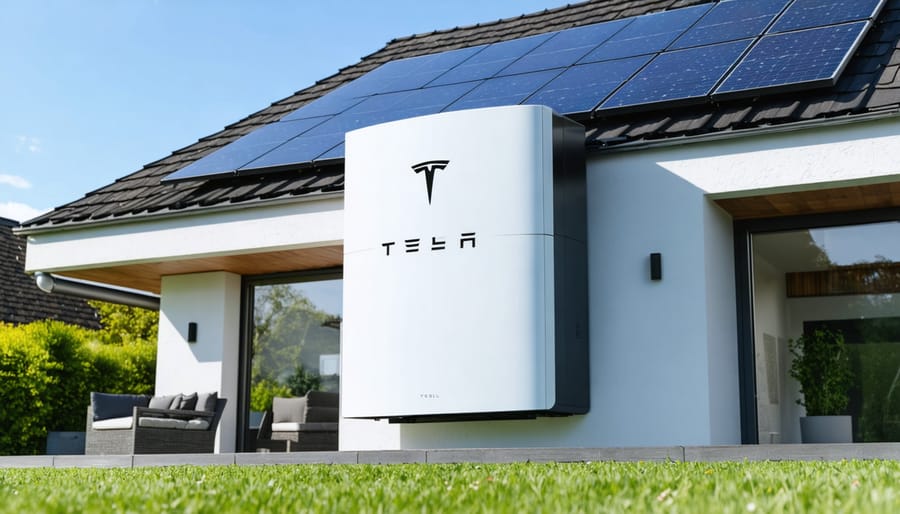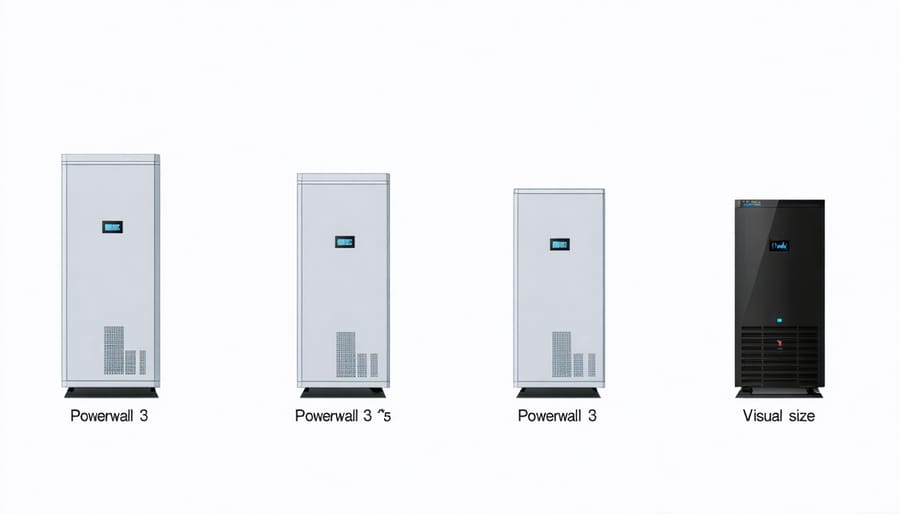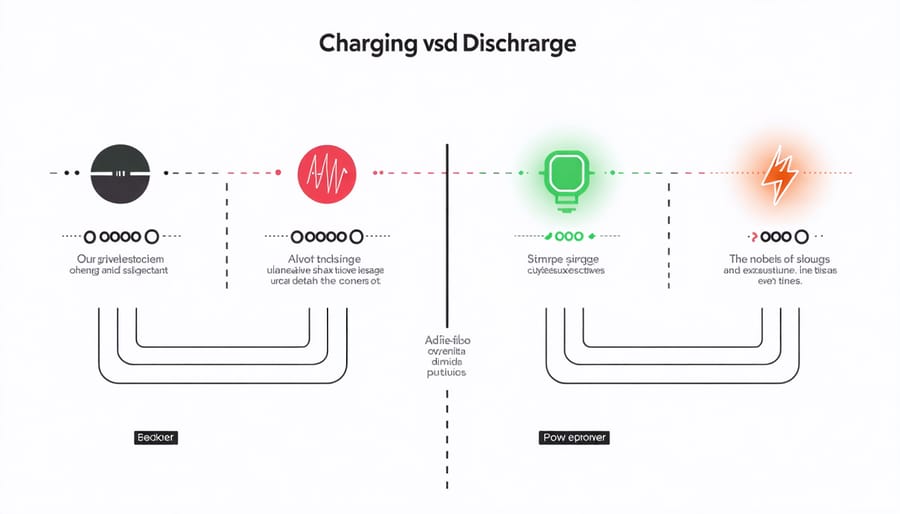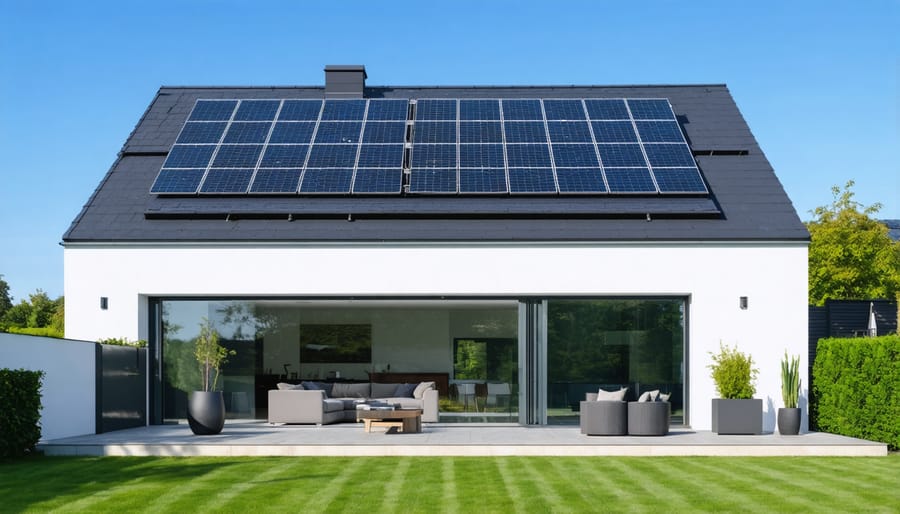Tesla Powerwall 3: New Storage Capacity Pushes Home Energy Freedom Further

Tesla’s latest Powerwall 3 represents a significant leap forward in home energy storage technology, offering enhanced capacity and performance that transforms how European households manage their energy independence. With a substantial 13.5 kWh capacity and an impressive 11.5 kW peak power output, this third-generation system delivers 30% more power than its predecessor.
The Powerwall 3 introduces revolutionary features, including integrated solar inverter technology and advanced storm detection capabilities, making it particularly valuable for European regions experiencing grid instability. Its refined thermal management system and upgraded battery chemistry enable superior performance across diverse climate conditions, from Nordic winters to Mediterranean summers.
For homeowners and businesses considering sustainable energy solutions, the Powerwall 3’s enhanced specifications offer compelling advantages: faster charging rates, improved backup power capabilities, and seamless integration with existing solar installations. This latest iteration demonstrates Tesla’s commitment to advancing home energy storage while addressing the specific needs of the European market’s evolving energy landscape.
Enhanced Storage Capacity Specifications

Total Usable Capacity
The Powerwall 3’s enhanced Powerwall storage capacity offers 13.5 kWh of total energy storage, with an impressive usable capacity of 12.8 kWh. This represents a significant improvement in efficiency, with approximately 95% of the total capacity being available for daily use. The system maintains this high performance through advanced battery management technology and improved cell chemistry.
When compared to industry standards, the Powerwall 3’s usable capacity stands out for its exceptional depth of discharge (DoD) ratio. This efficiency means homeowners can rely on more stored energy for their daily needs, whether during peak consumption hours or emergency backup situations.
The system’s capacity is particularly well-suited for European households, typically consuming between 8-12 kWh daily. Multiple units can be connected in parallel for properties requiring additional storage, with up to ten Powerwall units working seamlessly together to provide up to 128 kWh of usable capacity. This scalability ensures the system can accommodate varying energy needs, from modest residential installations to more demanding commercial applications.
Peak Power Output
The Powerwall 3 showcases impressive peak power output capabilities, delivering up to 11.5 kW of continuous power for connected loads. This substantial increase in power output compared to previous generations makes it particularly suitable for European households with higher energy demands, including those using electric vehicle chargers and modern heat pumps.
During normal operation, the system can sustain this peak output for extended periods, providing reliable power for multiple high-demand appliances simultaneously. The advanced thermal management system ensures consistent performance even during intensive use, making it an efficient solution for both residential and small business applications.
For backup scenarios during grid outages, the Powerwall 3 can deliver the full 11.5 kW output, enabling users to power essential equipment and maintain regular operations. The system’s rapid response time of less than 10 milliseconds ensures seamless transition between grid and battery power, protecting sensitive electronics and maintaining uninterrupted power supply.
This enhanced power output capability particularly benefits European users with three-phase electrical systems, offering balanced power distribution across all phases while supporting sustainable energy integration.
Charging and Discharge Specifications

Charging Efficiency
The Powerwall 3 showcases significant improvements in charging efficiency compared to its predecessors. With a peak AC charging rate of 11.5 kW, this latest iteration optimises power conversion during both grid and solar charging scenarios. The system maintains a remarkable round-trip efficiency of 94.5%, meaning minimal energy loss during the charging and discharging cycle.
For solar integration, the Powerwall 3 features enhanced charging algorithms that maximise renewable energy capture throughout the day. The system’s advanced power electronics enable seamless switching between charging sources, whether from solar panels or the grid, with response times under 0.5 seconds.
The charging system adapts intelligently to varying power inputs, making it particularly effective for European households with diverse renewable energy setups. During peak solar production, the Powerwall 3 can simultaneously power home appliances while charging at full capacity, ensuring optimal energy utilisation.
Temperature management during charging has also been refined, with an innovative cooling system that maintains optimal battery conditions even during intensive charging cycles, contributing to longer battery life and sustained performance.
Discharge Capabilities
The Powerwall 3 showcases impressive discharge capabilities, delivering a continuous power output of 11.5 kW for sustained operation. During peak demand periods, the system can surge up to 12 kW, providing the extra power needed for high-consumption appliances or simultaneous device operation. This enhanced discharge rate represents a significant advancement in home energy management, particularly beneficial for European households with varying power demands.
The system maintains stable performance across different load scenarios, whether supporting essential household functions during outages or optimising self-consumption of solar energy. Its rapid response time ensures seamless switching between grid and battery power, maintaining uninterrupted power supply to connected devices.
For optimal efficiency, the Powerwall 3 operates at a nominal voltage of 400V AC, compatible with European electrical standards. The discharge depth can reach 100% of usable capacity, maximising the available stored energy. The system’s advanced thermal management ensures consistent discharge performance across various environmental conditions, maintaining efficiency in temperatures ranging from -20°C to 50°C, typical of European climate variations.
Real-World Performance Impact
Daily Usage Scenarios
The Powerwall 3 adapts seamlessly to various daily usage scenarios, making it an ideal solution for achieving home energy independence. During peak sunlight hours, the system efficiently stores excess solar energy for later use, ensuring optimal energy management throughout the day.
In a typical household scenario, the Powerwall 3 automatically switches to stored power during evening peak tariff periods, helping homeowners avoid high electricity rates. The system’s smart time-based control feature enables automatic charging during off-peak hours when grid electricity is least expensive.
For homes with electric vehicles, the Powerwall 3 can be programmed to ensure sufficient reserve capacity for unexpected charging needs while maintaining household power requirements. During power outages, the system’s rapid switchover capability provides uninterrupted power to essential household appliances.
The system excels in load shifting applications, storing energy when demand is low and deploying it during high-demand periods. This capability is particularly valuable for businesses managing energy costs. The advanced monitoring system allows users to track energy consumption patterns in real-time through a user-friendly app, enabling informed decisions about energy usage and optimization.
In winter months, the Powerwall 3 effectively supports heating systems during peak demand, while in summer, it helps manage air conditioning loads efficiently, contributing to year-round energy optimization.
Backup Power Duration
The Powerwall 3’s backup power duration varies significantly depending on your household’s energy consumption patterns and connected loads. Under typical residential usage, a single unit can provide 8-12 hours of continuous backup power for essential loads like refrigeration, lighting, and basic appliances.
During optimal conditions with modest energy usage (3-4 kW continuous load), the system can extend backup duration to 18-24 hours. However, when powering high-demand appliances such as electric heating systems or multiple air conditioning units, the backup duration may reduce to 4-6 hours.
For enhanced reliability, the system intelligently manages power distribution during outages. It automatically prioritises critical loads and can be programmed to disable non-essential circuits, maximising backup duration when needed. The Storm Watch feature proactively charges the battery to full capacity when adverse weather is predicted, ensuring maximum backup potential during potential grid disruptions.
Multiple Powerwall 3 units can be linked together to extend backup duration proportionally. A two-unit configuration, for instance, typically doubles the backup duration, providing enhanced peace of mind for households with higher energy requirements or longer outage concerns.
Weather conditions and seasonal variations also impact backup duration. Solar-connected systems can significantly extend backup times during daylight hours, as the battery can continue charging while providing backup power.

Integration with Solar Systems
The Powerwall 3 demonstrates exceptional versatility when integrated with both new and existing solar installations. Its advanced inverter technology enables seamless connection with various solar panel configurations, supporting both string and microinverter setups common across European installations. The system’s intelligent solar integration optimization ensures maximum energy capture and efficient storage distribution throughout the day.
The unit’s built-in energy management system automatically prioritizes solar power utilization, storing excess generation during peak production hours and providing stored energy when needed. This intelligent management extends to weather prediction capabilities, adjusting charging patterns based on forecasted solar availability to maximize self-consumption rates.
For retrofit installations, the Powerwall 3 offers simplified connection protocols that reduce installation complexity and time. The system supports both single-phase and three-phase power configurations, making it suitable for diverse European residential and commercial applications. Its compatibility extends to most major solar inverter brands, ensuring flexibility in system design and implementation.
The device’s monitoring interface provides detailed insights into solar production, consumption patterns, and storage status, enabling users to fine-tune their energy usage. Real-time data analysis helps optimize charging cycles and discharge patterns, potentially increasing overall system efficiency by up to 20% compared to basic solar-only installations.
For maximum benefit, the system can be configured to prioritize self-consumption during peak tariff periods, ensuring optimal economic returns on solar investments while maintaining grid stability and backup power availability.
The Powerwall 3’s impressive specifications mark a significant leap forward in home energy storage technology. With its increased 13.5 kWh capacity, improved power output of 11.5 kW, and enhanced thermal management system, this latest iteration offers European homeowners unprecedented control over their energy consumption. The system’s ability to seamlessly integrate with solar installations and smart home networks, combined with its compact design and reliable performance, makes it a cornerstone for achieving energy independence.
The advanced monitoring capabilities and robust backup power features ensure households can maintain essential operations during grid outages, while the system’s efficiency improvements contribute to reduced energy costs and a smaller carbon footprint. For European consumers pursuing sustainable energy solutions, the Powerwall 3’s specifications represent not just an upgrade in technology, but a practical pathway toward energy autonomy and environmental responsibility. These capabilities position the Powerwall 3 as a crucial component in the broader transition to renewable energy across European homes and businesses.
Leave a Reply